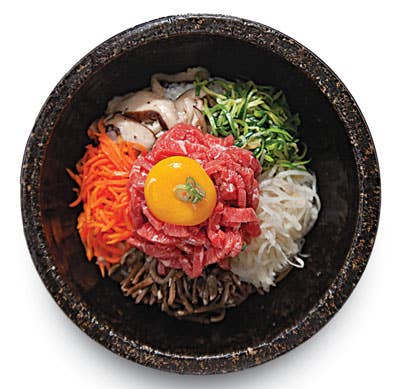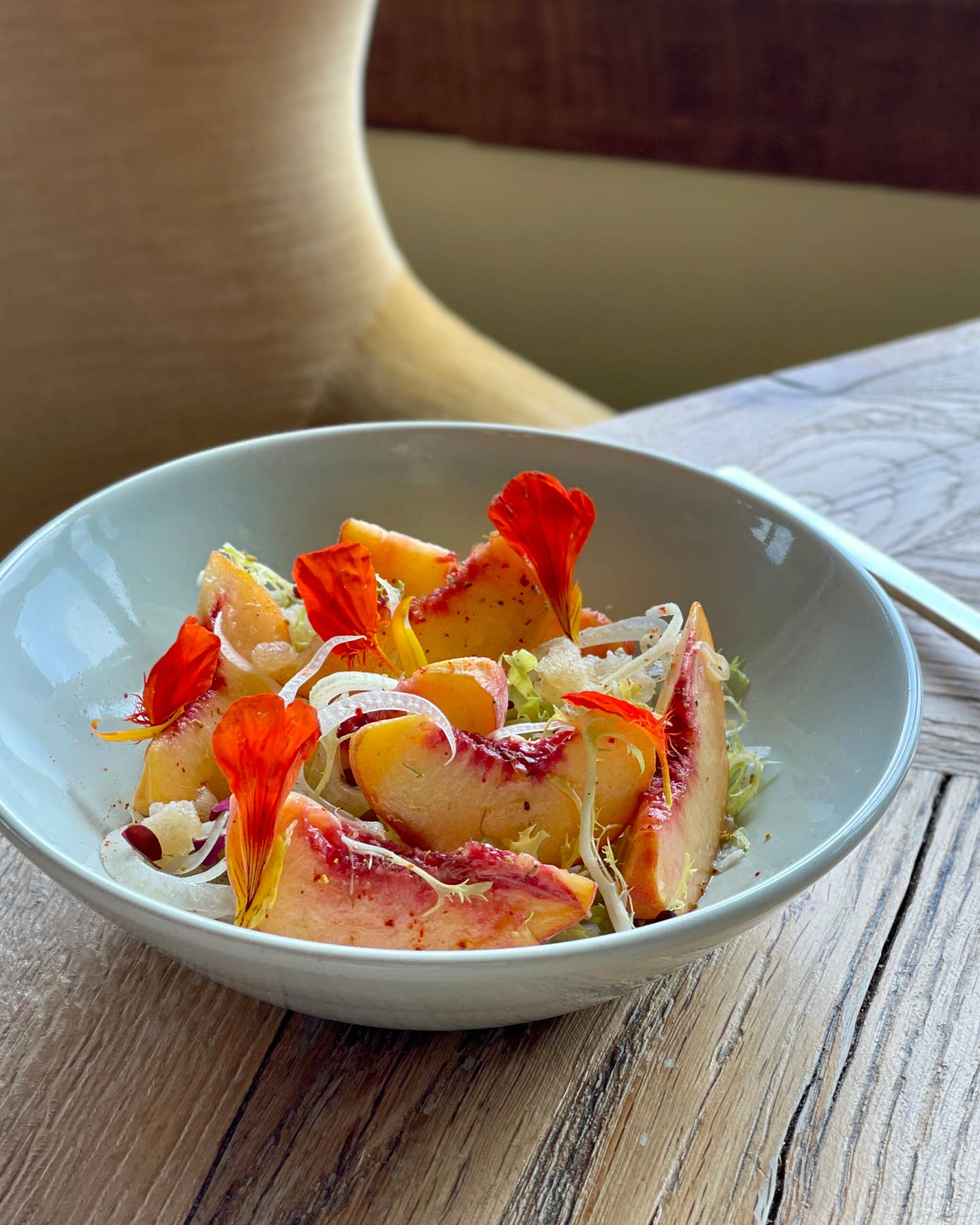
Good Granite
The Korean bowls known as dolsots can withstand very high temperatures and impart extra flavor to all kinds of dishes.
Heavy granite bowls known as dolsots have been used in Korean cooking for centuries. In the U.S., they're sold in Asian stores and online. What's the appeal? They can withstand temperatures as high as 615°F and stay hot for a long time; with use, the stone also absorbs oils that impart an extra flavor to foods. In Korea, a dolsot is used for making bubbling stews, as well as for dolsot bibimbap, a version of the classic dish of rice, vegetables, meats, and egg. When packed into a dolsot that's been heated over a flame, the bibimbap is served sizzling, any raw ingredients cook in the bowl, and the rice that's in contact with the stone becomes toasted and chewy. Koreans call that prized layer of rice nurungji and mix it with warm water for a porridge called nurungji bap. A dolsot requires seasoning before use: gently preheat it and brush it with sesame oil. Wash your dolsot with hot water only, never with soap, which the stone can absorb. Along with making bibimbap, you can use the dolsot to crisp polenta and serve soups.
Keep Reading
Continue to Next Story










